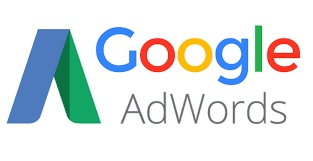Google Ads Words
Google Ads Words (previously known as Google Ads Words) is a paid advertising platform that allows businesses to create and display ads to users searching on Google. Here are the general steps for using Google Ads to create a word ad campaign:
- Create a Google Ads account: To use Google Ads, you’ll first need to create an account. This is where you’ll manage your ad campaigns and track your performance.
- Set up your campaign: Once you have an account, you can set up a new campaign. Choose the type of campaign you want to create, such as search or display, and set your budget and targeting options.
- Create ad groups: Within your campaign, you’ll create ad groups, which are sets of ads that target a specific group of keywords or interests.
- Write your ad: To write your ad, you’ll need to create a headline, a description, and a display URL. You also have the option to add additional information like Sitelinks, callouts and more.
- Choose keywords: The keywords you choose are the words and phrases that will trigger your ad to appear. You can use Google’s keyword planner tool to help you choose the best keywords for your campaign.
- Set your bid: Once you have your keywords, you’ll set your bid for each one, which is the amount you’re willing to pay for a click on your ad.
- Launch your campaign: Once you’ve set up your campaign, ad groups, and ads, you can launch your campaign and start displaying your ads to users.
- Monitor and optimize: After your campaign is launched, you can monitor your performance, check the metrics like click-through rate, conversion rate, cost per click etc. and optimize your ads based on their performance to improve the results.
Once your campaign is up and running, it is important to monitor and optimize it to ensure that you are getting the best results possible. Here are a few best practices for monitoring and optimizing your Google Ads campaign:
- Check your metrics regularly: Google Ads provides a variety of metrics that you can use to track your campaign’s performance, such as click-through rate (CTR), conversion rate, and cost per click (CPC). Check these metrics regularly to see how your campaign is performing and identify areas for improvement.
- Test different ad groups and ads: Testing different ad groups and ads can help you determine which ones are most effective at driving results. Try experimenting with different headlines, descriptions, and call to actions to see which ones perform the best.
- Use negative keywords: Negative keywords are words or phrases that you don’t want your ads to show for. By using negative keywords, you can avoid wasting impressions on irrelevant searches and increase the relevance of your ads to the user.
- Optimize your landing pages: Optimizing your landing pages is an important part of your Google Ads campaign. Make sure that your landing pages are optimized for conversions and that they align with the message of your ads to improve your conversion rate.
- Experiment with different bids: Google Ads allows you to set different bids for different keywords. Experimenting with different bids can help you find the sweet spot between getting the most traffic and keeping your costs under control.
- Utilize Google Ads features: Google Ads features such as ad scheduling, ad rotation, and audience targeting can help you reach the right audience at the right time, and improve the overall performance of your campaign.
- Keep an eye on your competition: Keeping an eye on your competition can give you a better understanding of how to optimize your own campaign. Monitor your competitors’ ads, landing pages, and keywords to gain insight into their strategies and apply the best practices to your own campaigns.
Another important aspect of Google Ads is analyzing the data, with the data you can get insights and make data-driven decisions to improve your campaign performance. Here are a few tips on how to analyze and use data from your Google Ads campaign:
- Analyze your data: Google Ads provides a wealth of data that you can use to analyze your campaign’s performance. Use the data to understand which keywords, ads, and ad groups are performing well, and which ones need improvement.
- Use the data to make decisions: Once you have analyzed your data, use it to make data-driven decisions. For example, if you see that a particular ad is not performing well, consider modifying or pausing it, or if you see that a particular keyword is not driving conversions, consider removing it or bid less on it.
- Use data to identify patterns: Look for patterns in the data, such as changes in performance over time, or trends in conversion rates. Use this information to identify the causes of changes in performance and adjust your strategy accordingly.
- Use Google Ads Analytics: Google Ads has a built-in analytics tool, which allows you to track the behavior and conversion of your website visitors. By utilizing this tool, you can find out which ads and keywords are driving the most traffic to your website and see which pages are most popular, so you can optimize your website to convert more visitors.
- Use Google Ads conversion tracking: Google Ads provides a conversion tracking feature that allows you to track the number of conversions that occur as a result of your ads. This will help you understand which ads and keywords are driving the most conversions, so you can optimize your campaign accordingly.
- Use Google Ads Audience insights: Google Ads Audience insights, is a feature that allows you to see the demographics and interests of people who have seen or clicked on your ads. It allows you to understand who your audience is and target them more effectively by using demographics and interests targeting.
By following these best practices, analyzing data and making data-driven decisions, you can optimize your Google Ads campaigns and get better results. It’s important to remember that Google Ads requires ongoing monitoring and optimization, but the effort is worth it as it will help you increase your visibility and drive more leads, sales and revenue for your business.
How do Google Ads Words?
Google Ads Words (previously known as Google Ads Words) is a paid advertising platform that allows businesses to create and display ads to users searching on Google and its network of partner websites.
When a user performs a search on Google that matches the keywords associated with an advertiser’s ad, that ad may appear in the search results. The advertiser is charged only when a user clicks on the ad, a pricing model known as pay-per-click (PPC).
Here is an overview of the process of how Google Ads Words:
- Ad Creation: Advertisers create ads using the Google Ads platform. The ads include a headline, description, and a link to the advertiser’s website. Advertisers can also include images, videos, and other multimedia elements in their ads.
- Keyword Selection: Advertisers select the keywords they want their ads to appear for. These are the terms that users search for on Google that will trigger the ads to show.
- Ad Campaign: Advertisers create an ad campaign, which includes a set of ads, targeting options, and a budget.
- Ad Auction: When a user performs a search on Google, an auction is held to determine which ads will appear in the search results. The ads are ranked based on a number of factors, including relevance, quality, and bid amount.
- Ad Placement: The highest-ranking ads are displayed in the search results and on the Google Ads network of partner websites.
- Ad Performance: Advertisers can track the performance of their ads using the metrics provided by Google Ads, such as click-through rate, conversion rate, and cost per click. This data can be used to optimize the campaign, targeting, ad copy and other elements to improve results
Google Ads is a powerful tool for driving targeted traffic to your website, but it can also be complex and time-consuming to set up and manage. However, by following best practices and regularly monitoring and optimizing your campaigns, you can improve your return on investment and achieve better results.
Conclusion
In conclusion, Google Ads Words is a powerful tool for driving targeted traffic to your website, but it can also be complex and time-consuming to set up and manage. By following best practices for setting up your campaigns, writing effective ads, choosing the right keywords, setting bids, and optimizing your campaigns, you can increase your visibility and drive more leads and sales for your business.
It is also important to keep monitoring and optimizing your campaigns, using the metrics and data provided by Google Ads. This will allow you to identify areas for improvement and make data-driven decisions to optimize your campaigns and improve your return on investment. The use of advanced features such as Ad scheduling, Ad rotation, audience targeting and audience insights will also help you to better target the audience and improve performance.
Overall, Google Ads can be an effective tool for reaching new customers and driving growth for your business, with the right approach and regular monitoring and optimization.


No comments yet